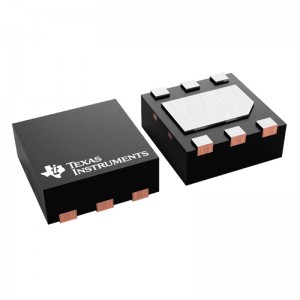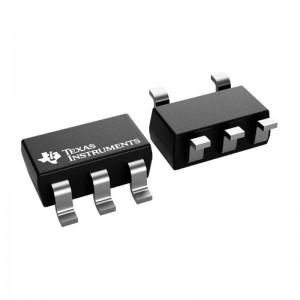
Products
TLV70728PDQNR 200-mA
Features for the TLV707P
●0.5% Typical Accuracy
●Supports 200-mA Output
●Low IQ: 25 µA
●Fixed-Output Voltage Combinations Possible from 0.85 V to 5.0 V(1)
●High PSRR:
○70 dB at 100 Hz
○50 dB at 1MHz
●Stable With Effective Capacitance of 0.1 µF(2)
●Thermal Shutdown and Overcurrent Protection
●Package: 1-mm × 1-mm DQN (X2SON) (1) (2)
(1)For all available voltage options, see the package option addendum at the end of the data sheet.
(2)See the Mechanical, Packaging, and Orderable Information section for more details.
Description for the TLV707P
The TLV707 series (TLV707 and TLV707P) of low-dropout linear regulators (LDOs) are lowquiescent current devices with excellent line and load transient performance for power-sensitiveapplications. These devices provide a typical accuracy of 0.5%. All versions have thermal shutdownand overcurrent protection for safety.
Furthermore, these devices are stable with an effective output capacitance of only 0.1µF. This feature enables the use of cost-effective capacitors that have higher bias voltages andtemperature derating. These devices also regulate to the specified accuracy with no outputload.
The TLV707P also provides an active pulldown circuit to quickly discharge theoutputs.
The TLV707 series of LDOs are available in a 1-mm × 1-mm DQN (X2SON) package that makesthem desirable for handheld applications.
1. Who are the staff in your R & D department? What are your qualifications?
-R & D Director: formulate the company’s long-term R & D plan and grasp the direction of research and development; Guide and supervise r&d department to implement company r&d strategy and annual R&D plan; Control the progress of product development and adjust the plan; Set up excellent product research and development team, audit and training related technical personnel.
R & D Manager: make new product R & D plan and demonstrate the feasibility of the plan; Supervise and manage the progress and quality of r&d work; Research new product development and propose effective solutions according to customer requirements in different fields
R&d staff: collect and sort out key data; Computer programming; Conducting experiments, tests and analyses; Prepare materials and equipment for experiments, tests and analyses; Record measurement data, make calculations and prepare charts; Conduct statistical surveys
2. What is your product research and development idea?
- Product conception and selection product concept and evaluation product definition and project plan design and development product testing and validation launch to market








